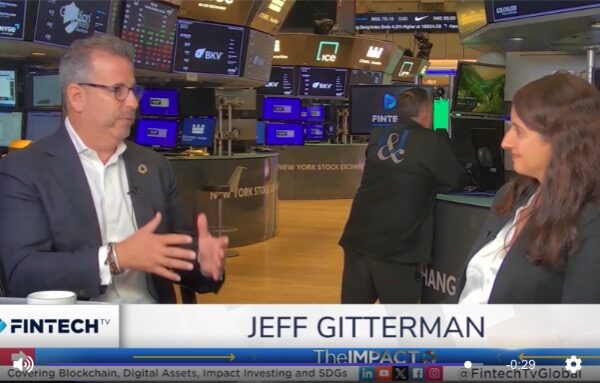An earlier version of this article was published on FactSet’s insights blog.
The next time you encounter a climate projection — in a news article, in a risk assessment, in an economic outlook — take a moment to acknowledge the under-appreciated integrated assessment model. Little-known outside the climate science and economics communities, but highly influential, these mathematical models (known as IAMS) play a role in virtually all serious climate analysis.
IAMs simulate the interactions among human and natural systems, typically with a focus on the impact of climate change. IAMs integrate data from different disciplines — such as economics, climate science and energy systems — to provide a comprehensive understanding of these forces’ complex interactions. To be sure, IAMs are imperfect, not least because they rely on extraordinarily complex datasets. But they are nonetheless essential to evaluating the costs and benefits of policy options that could help mitigate and adapt to the impacts of climate change and reduce greenhouse gas emissions (GhG), for example.
To explore why IAMs are vital, how they work, and how they might even be relevant on a household level, we turned to Pooja Khosla, PhD., Entelligent’s Chief Innovation Officer. Dr. Khosla is an econometrician and data scientist with extensive experience in data analysis, predictive modeling, econometrics, statistics, microfinance, and mutual fund analysis. Her firm specializes in climate-data analytics for risk management and investment through its patented Smart Climate product suite.
Integrated assessment models are essential for climate scenario analysis. Why are they so valuable?
The purpose of IAMs is to explore the trade-offs between economic costs and environmental benefits. Initially, they were developed as tools for government policymakers and corporations. IAMs have the power to provide multiple reflections and insights into causality. If you reduce X, what is going to happen with Y? If, for example, there is a reduction in oil production, how will economic systems change? How would climate systems and earth systems change?
Accuracy was never assumed in integrated resource assessment models. The major focus was on sensitivities and deltas. What changes will be most impactful and what changes will be least impactful? In fact, IAMs amount to a composite series of models that correlate or attach a lot of systems and concepts together: economics, planets, businesses, populations, and regulations.
Has the quality of IAMs improved over time?
IAMs have come a long way. In past years, they changed because demand changed. Now, there is demand at the macro level (e.g., institutional side) and the micro level to perform sensitivity analyses of how an action can cause a reaction across economic, climate, and earth systems.
IAMs are ingesting or absorbing more macro, social, business, and energy variables than before. And they’re solving for many more issues. Modern IAMs are more transparent and accessible, with many models available for public use and scrutiny. This has led to greater public engagement and discussion of the issues and trade-offs in mitigating climate change.
One very important factor that we see in the current development environment is that IAMs have expanded to consider a wider range of factors, including social and environmental justice, equity, and other non-economic impacts.
What are some applications supported by IAMs?
The most common and relevant applications of integrated assessment models are what might be called ”boxes of possibilities.” If you take something out of the box or change something in the box, the possible future outcome will change. For example, if you put in a carbon tax of 50%, what impact will it have on the production of coal, oil, gas, or nuclear power? How will this change the production impact in terms of GhG emissions. Will it increase sea levels?
The energy industry and Fortune 500 companies are increasingly using IAMs. I see the banking sector using IAMs to create policies and investment outlooks that are more sustainable and could help move capital in a direction that will be more sustainable for the planet and for the bank’s balance sheet. We don’t know exactly the results we will get; it’s a journey with the intention of maximizing the benefits to the planet.
How can asset management and financial institutions use IAMs?
With climate stress testing getting a lot of attention, institutions can use climate IAMs more effectively to incorporate climate considerations into investment decisions, manage climate-related risks and meet regulatory requirements. Climate stress testing looks at how fit investments will be in 2030, 2045, 2050, and 2100 from the perspectives of risk and climate impacts.
The Task Force for Climate-Related Financial Disclosure and Europe’s Sustainable Finance Disclosure Regulation are encouraging banks, financial institutions, and insurance companies to stress test their portfolios across multiple climate scenarios. Recently, the Federal Reserve Board provided additional details on how U.S. banks will conduct a pilot climate scenario analysis exercise and how to gather information on risk management practices. Use of climate IAMs and models based on the Network for Greening the Financial System is an important piece of the pilot.
Using a family household as an example, help us understand how individuals’ choices could factor into an IAM and demonstrate climate impact.
We can absolutely design simple, integrative resource assessment models that consider household behavior. For example, if you compost, use water efficiently, change to LED bulbs or install solar panels, what’s your household’s environmental impact? What can you change in your house to save 20% of the carbon, 50% of the carbon, 100% of the carbon?
If you could adjust the way IAMs are used or developed, what would you most want to change?
IAMs should be more granular, in my view. We need more micro- and industry-level translations of IAMs. This is hard work, but it’s necessary to provide more accurate information that can be absorbed and used by many more people. If we have the power to see future outcomes, we can see what is working and what is not working very quickly and make better decisions.
In addition, improving the quality and transparency of environmental, social, and governance (ESG) data in climate IAMs will help ensure they accurately reflect the environmental impact of investments.
Further, it is very important to integrate IAMs with other systems: for example, integration with enterprise risk management and accounting systems can help organizations provide a comprehensive view of portfolio holdings and performance.
One more important point that I think really needs to be emphasized: IAMs are not infallible. The projections can be wrong, and the models can be wrong. IAMs are designed not to give projections, but to explain the relativity and dependency of change. They are more journey- or path-oriented rather than output oriented.





